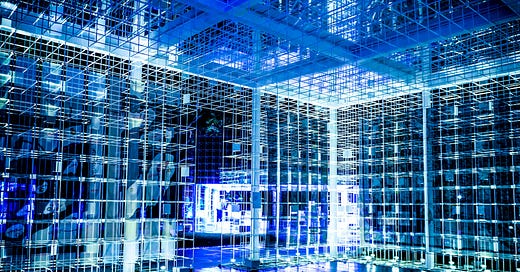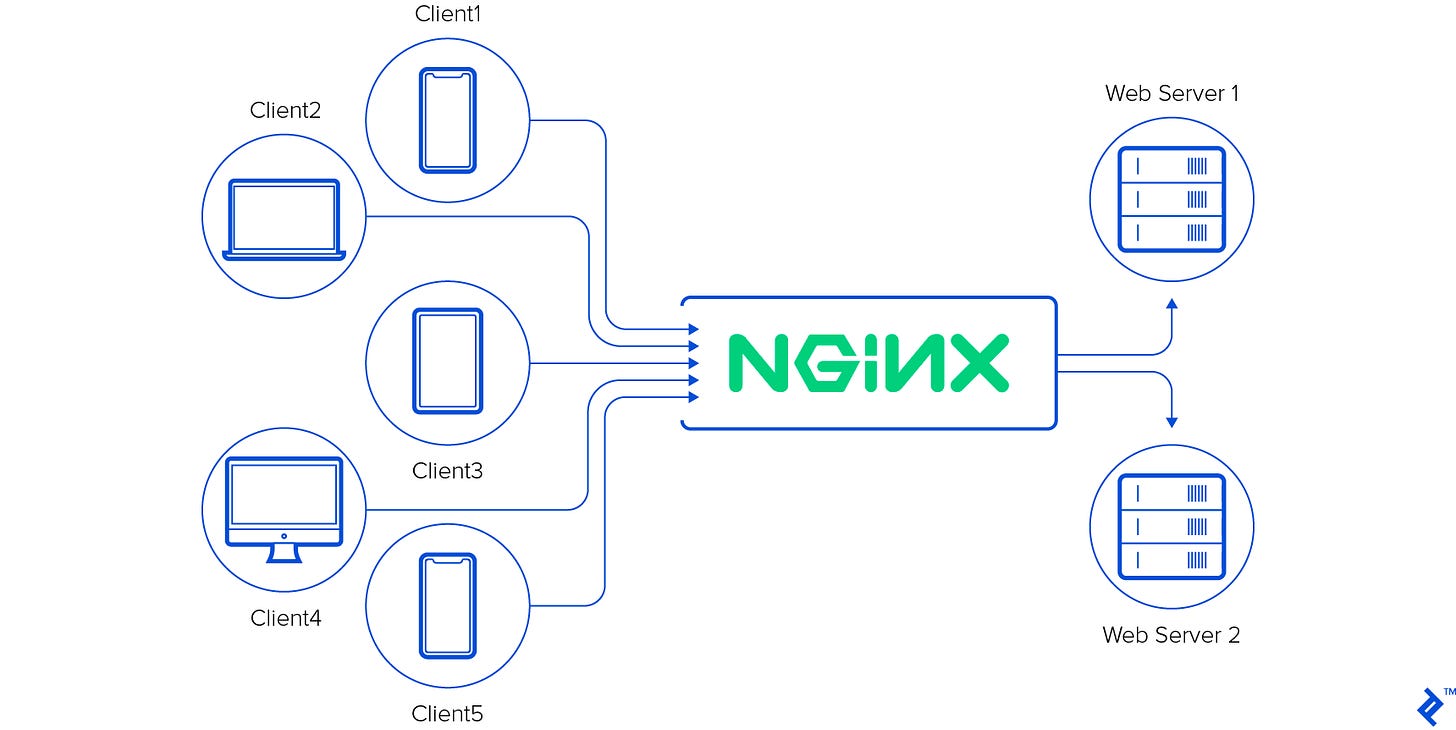Day 22 - Server Software, Nginx and Apache
I wanted to take a few minutes to talk about server software and how it relates to the products we manage.
But before that, as we are only a few days away from the end of the #AdventCalendar series, let's have a look back at the content we covered over the past 3 weeks.
Summary of the past three weeks in 2 minutes
Here are some common technologies that are often used in modern software development:
Programming languages: Some popular programming languages used in software development today include Java, Python, C#, C++, and JavaScript. Even though we haven't covered this, we assume we are all aware of the fact that there are several different programming languages, each with its pros/cons, community, and use cases. A hacky introduction to popular ones will be a series soon!
Web development frameworks: These frameworks provide a structure for building web applications and include tools for routing, templates, and database access. Examples include Django (Python), Ruby on Rails (Ruby), and ASP.NET (C#). We covered these on Day 17, Backend Frameworks.
Database technologies: Many software applications use databases to store data, and there are several database management systems (DBMS) to choose from. Some popular DBMSs include MySQL, PostgreSQL, and Microsoft SQL Server. Check out Day 18 for more info on DBs.
Cloud computing platforms: Cloud computing platforms such as Amazon Web Services (AWS), Microsoft Azure, and Google Cloud Platform provide a range of services including computing, storage, and networking that can be accessed over the internet. This an adjacent topic for today's, but not exactly. We'll take Cloud computing when we are building a product together, over a newsletter, isn't that cool? 🤩
Containerization: Containerization technologies such as Docker allow developers to package their applications and dependencies into a container that can be easily deployed and run on any machine. We explained this topic on Day 21, Containerization for Product Managers.
Version control systems: Version control systems such as Git allow developers to track changes to their codebase and collaborate with other team members. Don't forget to check out the 3 part tutorial on Git: Part 1, Part 2, and Part 3.
Continuous integration and deployment (CI/CD) tools: CI/CD tools such as Jenkins, CircleCI, and Travis CI automate the process of building, testing, and deploying code changes. Learn more on CI/CD on Day 7, and Day 8.
Server software: Server software such as Nginx and Apache are used to host web applications and serve web content to users. We will cover this in today's session!
😍 With this, you can say you have a full view of most of the technologies used in a typical software development project.
Server software
First, let's define what we mean by the server software. Simply put, the server software is a type of software that runs on a server and enables it to host web applications, serve static content, or perform other tasks. Some examples of server software include Nginx, Apache HTTP Server, and Microsoft IIS.
Now, let's dive a little deeper into two of these server software options, NGINX and Apache HTTP Server.
NGINX
NGINX (pronounced "engine x") is a web server that is often used to host web applications and serve static content, such as images and HTML files. It is known for its high performance, stability, and low resource consumption, making it a popular choice for web servers.
NGINX can also be used as a reverse proxy, load balancer, and HTTP cache.
As a reverse proxy, it can route traffic from the internet to one or more back-end servers, which can be helpful in several scenarios, such as serving multiple applications from the same domain, load balancing, and offloading SSL/TLS termination.
As a load balancer, NGINX can distribute incoming requests to multiple servers to improve performance and reliability.
As an HTTP cache, it can store commonly requested content in memory, reducing the load on back-end servers and improving the response time for users.
Some alternatives to NGINX include Apache HTTP Server and Microsoft IIS. Both of these servers are also widely used and have similar features, but NGINX is generally considered to be faster and more efficient than Apache and has a smaller memory footprint than IIS.
In comparison to other web servers, NGINX has several benefits:
High performance: NGINX is known for its fast performance and can handle a large number of concurrent connections with minimal resources.
Low resource consumption: NGINX has a small memory footprint and can run on relatively low-powered machines, making it a good choice for environments with limited resources.
Modular architecture: NGINX is built on a modular architecture, allowing users to choose the features they need and minimizing the risk of security vulnerabilities.
Versatility: In addition to serving as a web server, NGINX can also be used as a reverse proxy, load balancer, and HTTP cache, making it a versatile tool for web infrastructure.
Wide adoption: NGINX is widely used by several high-traffic websites, including Netflix, Dropbox, and Airbnb, giving it a proven track record of stability and reliability.
Apache HTTP Server
Apache HTTP Server is a popular open-source web server that is widely used to host web applications and serve static content, such as images and HTML files. It is developed and maintained by the Apache Software Foundation and is available for several operating systems, including Linux, Unix, and Windows.
Apache HTTP Server is known for its stability, security, and flexibility. It supports a wide range of features, including support for multiple protocols (such as HTTP and HTTPS), virtual hosting (allowing a single server to host multiple websites), and the ability to run multiple modules that can extend its functionality.
One of the main advantages of Apache HTTP Server is its widespread adoption and large user community. It has been around for a long time and has a proven track record of stability and reliability. There is also a wide range of third-party modules available that can be used to extend its functionality, such as mod_rewrite (for URL rewriting) and mod_ssl (for SSL/TLS support).
In comparison to other web servers, Apache HTTP Server has several benefits:
Wide adoption: Apache HTTP Server is widely used by a large number of websites, giving it a proven track record of stability and reliability.
Customization: Apache HTTP Server is highly customizable and can be extended with a range of third-party modules.
Security: Apache HTTP Server has several security features, such as support for SSL/TLS and the ability to run in a chroot environment.
Flexibility: Apache HTTP Server can be used to host multiple websites on a single server and can support a variety of protocols.
Community support: Apache HTTP Server has a large user community, which provides a wealth of resources and support for users.
Recap
In summary, server software is a type of software that runs on a server and enables it to host web applications, serve static content, or perform other tasks. Some examples of server software include Nginx, Apache HTTP Server, and Microsoft IIS. These options have different features and capabilities, and it's important to consider the specific needs of our products when choosing the right server software.
Now, you might be wondering why these different server software options matter for the products we manage. The server software that we choose can have a significant impact on the performance, security, and scalability of our products. It's important to consider the specific needs of our products and choose the server software that will best meet those needs.
I hope this helps to give you a better understanding of server software and how it relates to the products we manage. If you have any questions or would like to learn more, don't hesitate to reach out.












